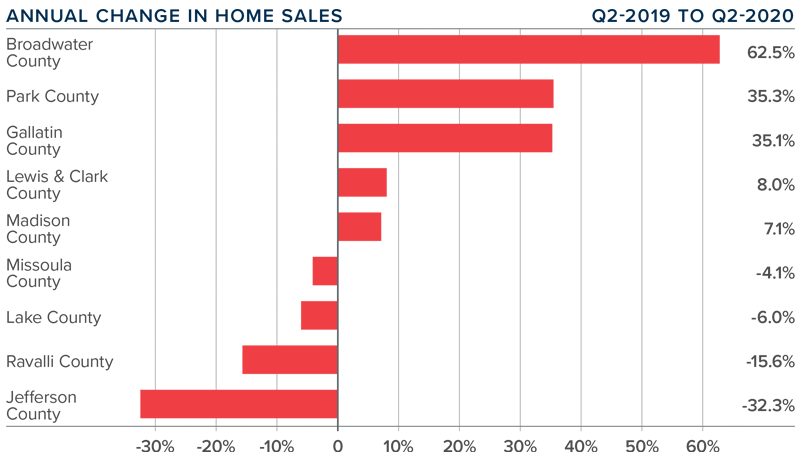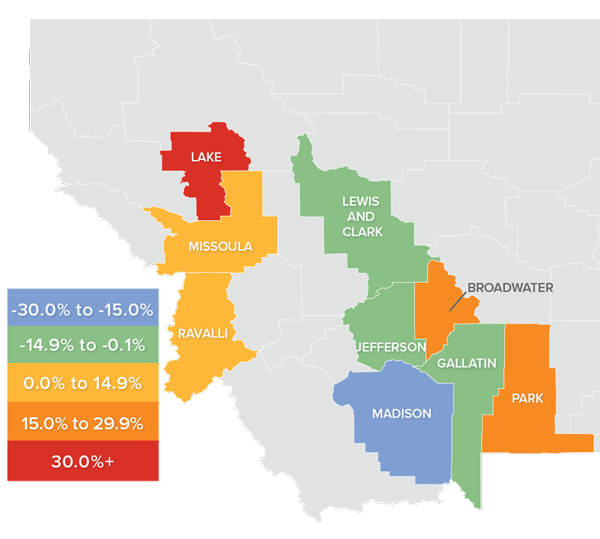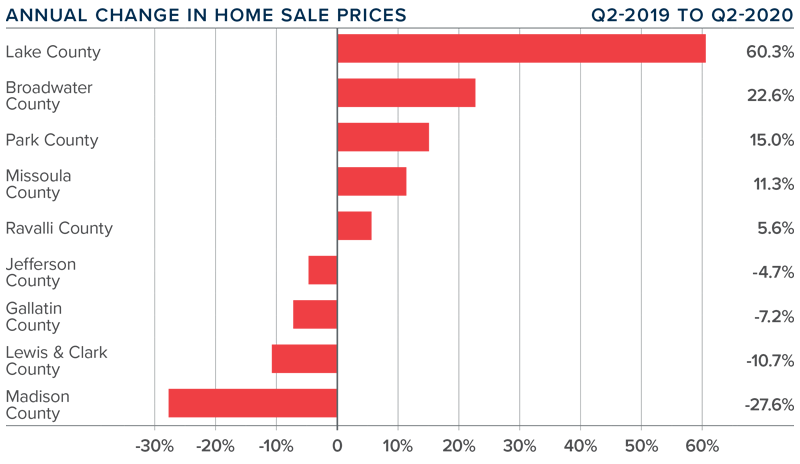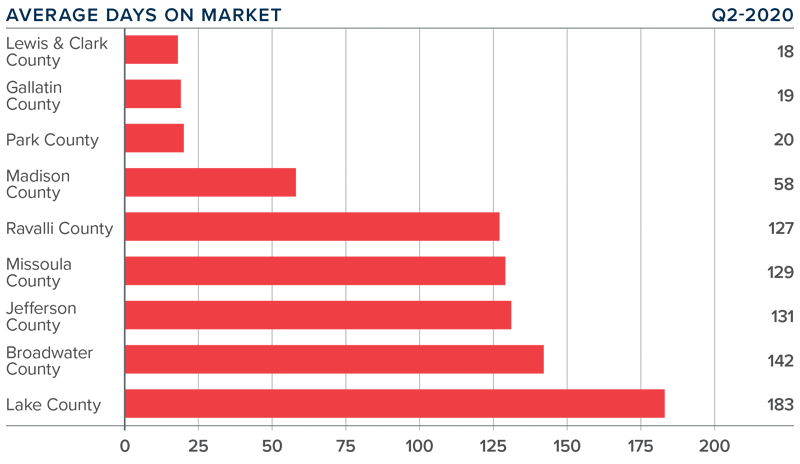The following analysis of select Montana real estate markets is provided by Windermere Real Estate Chief Economist Matthew Gardner. We hope that this information may assist you with making better-informed real estate decisions. For further information about the housing market in your area, please don’t hesitate to contact your Windermere agent.
ECONOMIC OVERVIEW
Along with the rest of the nation, Montana saw a sharp drop in employment due to COVID-19 but it appears as if a recovery is in place (at least for now). In April, total employment declined 13% from March, with a loss of 63,500 jobs. However, this turned around remarkably quickly with the return of 17,000 jobs in May. Job losses were seen in almost equal measure across the three metropolitan areas within Montana. The unemployment rate in the state was 9% in May, down from the COVID-19 peak of 11.9% in April. Although it is far too early to say that we are out of the woods, new infection rates in the state appear to have peaked and, if the trend of lower infection rates continues, we should see more jobs return.
HOME SALES
- During the second quarter of 2020, 837 homes sold, an increase of 8% over the same period in 2019.
- Total sales activity was a mixed bag. Five counties saw increases, but four saw declines. The largest annual increase was in very small Broadwater County, where sales were up more than 62%. The largest drop in sales was in the also small Jefferson County.
- The number of homes for sale remains well below where I would like to see it. There was an average of 1,303 listings in the second quarter within the counties contained in this report.
- Though inventory levels remain very low, demand has certainly returned. This is supported by the fact that closed sales rose by a very significant 46.1% over the first quarter of this year.

HOME PRICES
- Year-over-year, home prices were essentially static (+0.2%) and averaged $355,537. However, prices were 4.3% lower than in the first quarter of 2020.
- The region was split, with prices rising in five counties but dropping in four. The drop in sale price seen in Madison County is not worrisome, as it is a very small market and subject to significant swings in average prices.
- While prices saw a decline between first and second quarter, I believe this is a COVID-19-influenced decline, and summer numbers should be more telling.
- Year-over-year price growth stalled, and although there was a drop in prices compared to the first quarter of the year, I am not overly concerned. Hopefully the summer will bring more inventory and, when combined with historically low interest rates, the market should rebound.

DAYS ON MARKET
- The average number of days it took to sell a home dropped 25 days compared to the second quarter of 2019.
- Homes sold fastest in Lewis and Clark County and slowest in Lake County. Six counties saw days on market drop compared to the same period a year ago; three saw market time rise.
- During the second quarter of 2020, it took an average of 92 days to sell a home in the region.
- The headline here is that market time dropped by a significant 46 days compared to the first quarter of the year.

CONCLUSIONS
 This speedometer reflects the state of the region’s real estate market using housing inventory, price gains, home sales, interest rates, and larger economic factors.
This speedometer reflects the state of the region’s real estate market using housing inventory, price gains, home sales, interest rates, and larger economic factors.
Pending sales increased significantly compared to both the first quarter of this year and a year ago, which suggests demand has reappeared. When combined with historically low interest rates, the market is set to rebound and will only be limited by the number of homes for sale.
The housing market has exhibited remarkable resilience, and housing demand is solid. It remains a seller’s market and I have moved the needle a little further even though we saw a slowdown in home price growth.
ABOUT MATTHEW GARDNER
 As Chief Economist for Windermere Real Estate, Matthew Gardner is responsible for analyzing and interpreting economic data and its impact on the real estate market on both a local and national level. Matthew has over 30 years of professional experience both in the U.S. and U.K.
As Chief Economist for Windermere Real Estate, Matthew Gardner is responsible for analyzing and interpreting economic data and its impact on the real estate market on both a local and national level. Matthew has over 30 years of professional experience both in the U.S. and U.K.
In addition to his day-to-day responsibilities, Matthew sits on the Washington State Governors Council of Economic Advisors; chairs the Board of Trustees at the Washington Center for Real Estate Research at the University of Washington; and is an Advisory Board Member at the Runstad Center for Real Estate Studies at the University of Washington where he also lectures in real estate economics.
 Facebook
Facebook
 X
X
 Pinterest
Pinterest
 Copy Link
Copy Link



